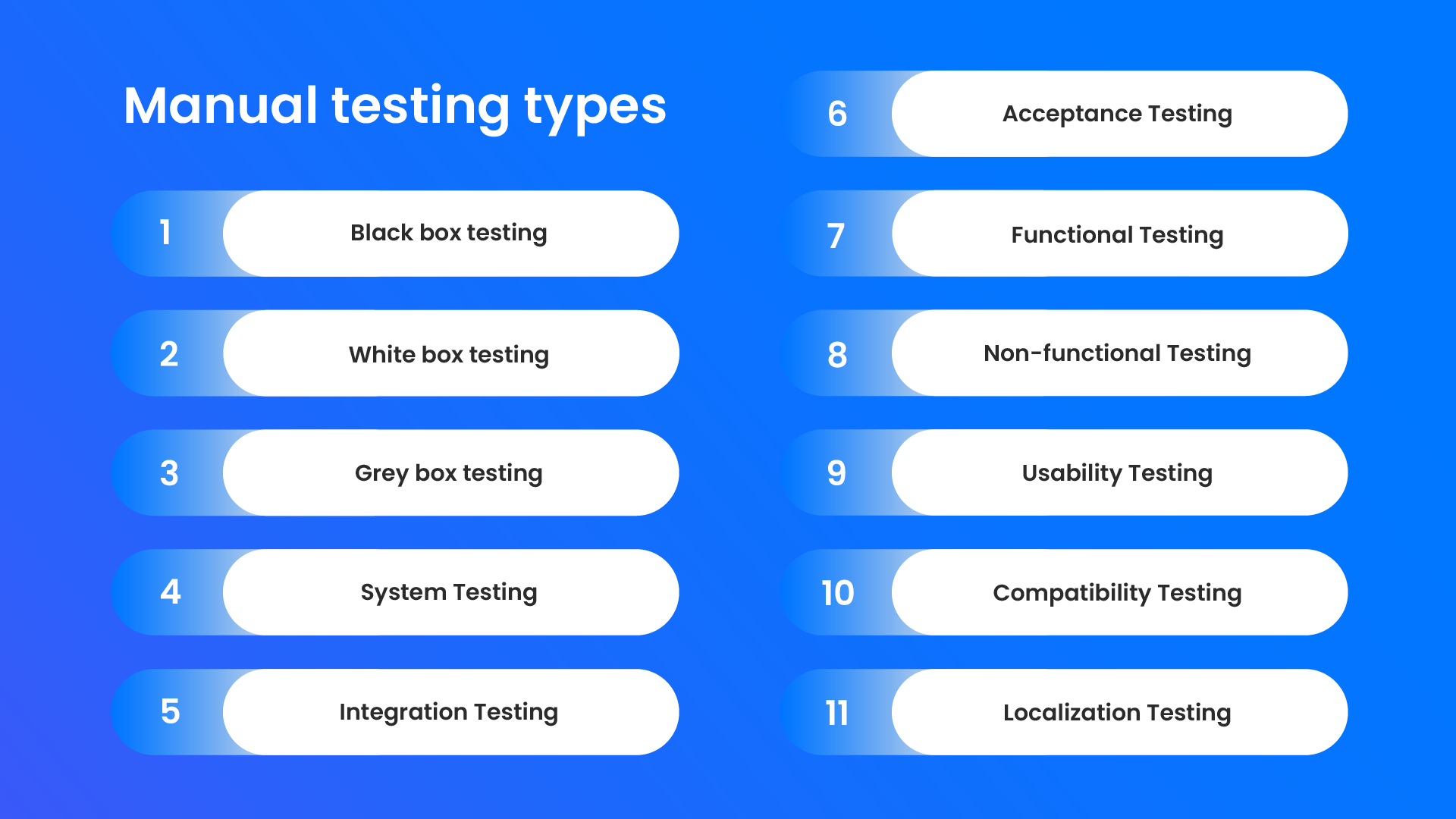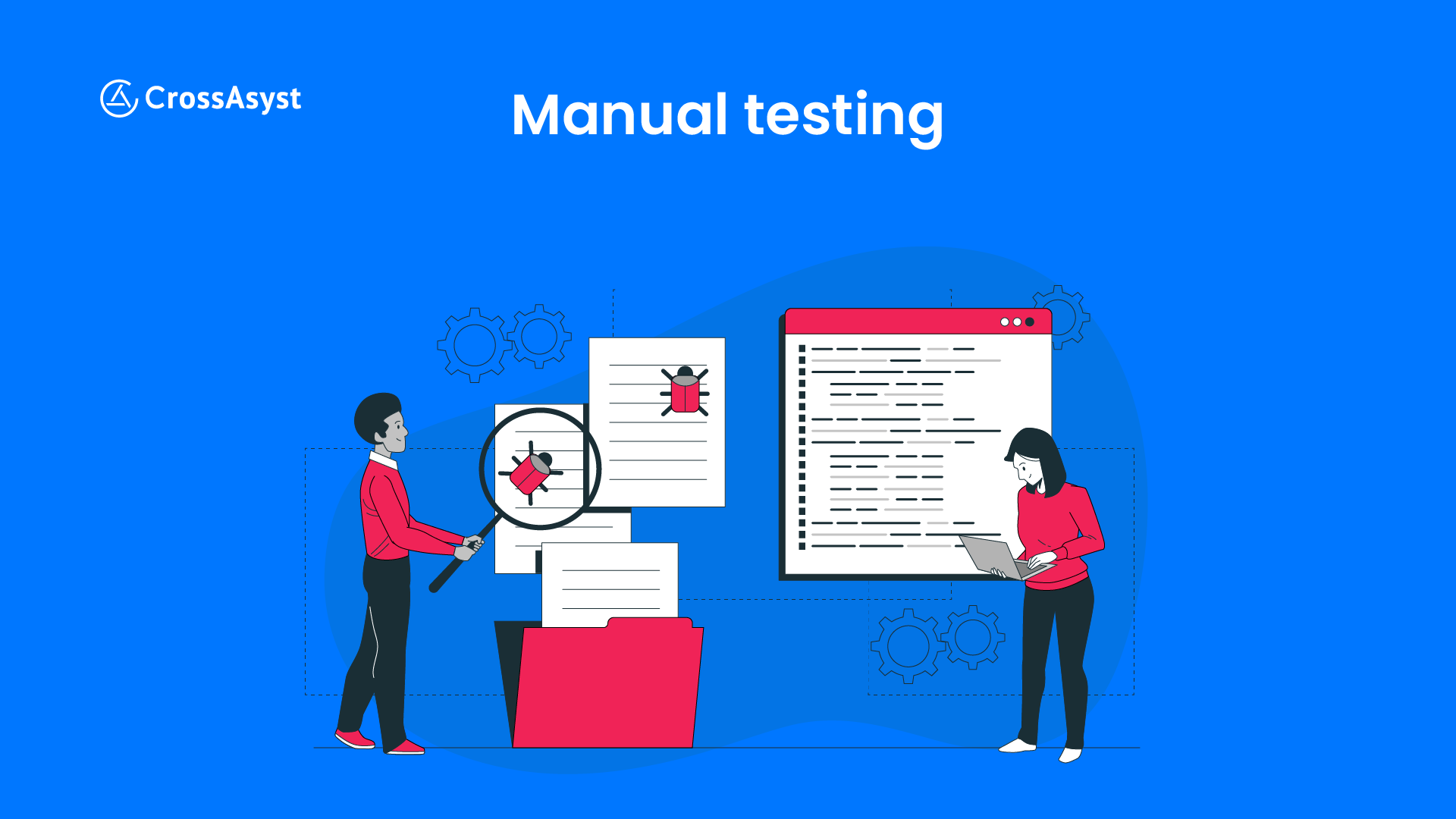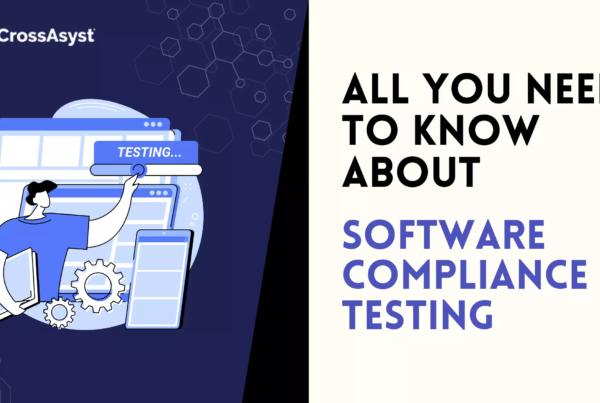Software testing is an integral part of the software development cycle. Software testers are responsible for making sure that the software is efficient and bug-free before it is deployed.
Software testing can be broadly classified into automated and manual testing. Here’s a detailed look at what manual testing is, types of manual testing, its applications, and more.
Table of Contents
What is Manual Software Testing?
Manual software testing is a process in which quality assurance professionals manually evaluate and verify the functionality, usability, and overall quality of a software application.
This testing approach involves human testers executing test cases without the aid of automation tools. Manual testing is essential for ensuring the reliability and effectiveness of software products.
What is the Importance of Manual Testing?
Let’s take a quick look at why manual testing is an important part of the software development process.
More Human Input, More Adaptable
One of the key advantages of manual testing is the human touch it brings to the testing process. Testers can adapt to real-world scenarios, think creatively, and assess the software from a user’s perspective. This adaptability is crucial for uncovering unexpected issues that may be missed by automated tests.
Easier to Learn, Better for Changes
Manual testing is relatively easy to learn and adapt to changes in the software. Testers can quickly update test cases and test data to accommodate new features or modifications, making it ideal for agile development environments.
Less Coding, More Exploring
Unlike automated testing, manual testing doesn’t require extensive coding skills. Testers can focus on exploring the application’s behavior and functionality, making it accessible to a broader range of team members.
Manual testers also have the flexibility to explore the software beyond the expected user journey, leading to the discovery of corner cases and usability issues that automated tests might not uncover.
Ideal for Small Projects
Manual testing is cost-effective and well-suited for small-scale projects with limited resources, where the overhead of setting up automation may not be justified.
Types of Manual Software Testing and Examples
There are multiple types of testing that fall under the umbrella of manual testing. Let’s jump into these types with examples of their application.

Black box testing
Black box testing focuses on evaluating the software’s functionality without knowledge of its internal structure. Testers validate inputs and compare the expected outputs, often using test cases based on specifications or requirements.
Example
They are testing a web search engine without knowing its underlying algorithms. Testers input various search queries and assess whether the search engine returns relevant results based on the expected behavior defined in the requirements.
White box testing
White box testing, on the other hand, delves into the internal structure and code of the software. Testers assess how the application handles specific code paths, logic, and data flows.
Example
Examining the source code of a financial software application to ensure that it correctly calculates and validates interest rates for different financial products according to specific mathematical formulas.
Grey box testing
Grey box testing combines elements of both black box and white box testing. Testers have partial knowledge of the software’s internal structure and use it to design test cases.
Example
Testing a customer relationship management (CRM) system where testers have partial access to the database structure. Testers use their knowledge of the database schema to verify that data is correctly stored and retrieved by the CRM software.
System Testing
System testing evaluates the entire software system as a whole, ensuring that all components work together seamlessly.
Example
Evaluating an airline reservation system by testing the entire booking process, including searching for flights, selecting seats, entering passenger details, and making payments to ensure a seamless end-to-end customer experience.
Integration Testing
Integration testing verifies that individual components or modules of the software integrate correctly, ensuring that data flows smoothly between them.
Example
Testing an e-commerce website by checking the integration between the shopping cart module and the payment gateway. Testers ensure that when users add items to the cart and proceed to checkout, the payment process functions smoothly.
Acceptance Testing
Acceptance testing is performed to determine whether the software meets the user’s requirements and is ready for release.
Example
End-users of a content management system (CMS) reviewing the software to confirm that it fulfills their specific requirements for managing and publishing content on a website. They provide feedback to determine if the CMS is ready for release.
Functional Testing
Functional testing validates that the software functions according to its specifications, ensuring that it meets the intended functionality.
Example
Verifying that a newly developed mobile banking app allows users to perform essential functions like checking account balances, transferring funds, and paying bills, as per the app’s documented specifications.
Non-functional Testing
Non-functional testing assesses aspects such as performance, security, scalability, and reliability.
Example
Conducting performance testing on a video streaming platform to assess how well it handles simultaneous user connections. Testers measure the platform’s ability to stream high-definition videos without buffering or delays.
Usability Testing
Usability testing focuses on the user experience, ensuring that the software is user-friendly and meets user expectations.
Example
Testing a mobile weather app to evaluate the user experience. Testers check if the app is intuitive, provides clear weather information, and is easy for users to navigate, ensuring it meets their expectations.
Compatibility Testing
Compatibility testing ensures that the software works seamlessly on various platforms, browsers, and devices.
Example
Testing a newly developed e-commerce website on multiple web browsers such as Chrome, Firefox, Safari, and Internet Explorer to ensure that it displays correctly and functions without errors on all of them.
Localization Testing
Localization testing confirms that the software is culturally and linguistically suitable for the target audience.
Example
Assessing a video game for a global audience by testing its language and cultural adaptability. Testers check if the game’s text, images, and cultural references are suitable and appealing to players in various regions, such as the United States, Japan, and Germany.
Differences Between Manual Testing and Automated Testing
Here are the major differences between manual testing and automated testing.
Manual Testing
- Offers adaptability and flexibility in testing.
- Allows testers to provide human insights and creativity in the testing process.
- Ideal for exploratory testing, where the test cases are not predefined and need to be explored.
- Well-suited for small-scale projects with limited resources.
- Easier to learn and adapt to changes in the software.
- Low maintenance cost, as it doesn’t involve constant script updates.
Automated Testing
- Excels in repetitive, large-scale testing, where the same test cases need to be executed multiple times.
- Focuses on efficiency and repeatability by automating test case execution.
- Requires significant initial setup and script development.
- Well-suited for regression testing to quickly identify and fix software regressions.
- Provides faster test execution and immediate feedback.
- Requires coding skills and expertise in automation tools and frameworks.
Limitations of Manual Testing
While manual testing is the best approach in certain situations, as illustrated above, it is not without its limitations. Here’s a look at what some of these limitations are.
1. Time-consuming and labor-intensive
Manual testing can be time-consuming and labor-intensive, particularly for complex applications, leading to longer testing cycles.
2. Prone to human error
Human testers may make mistakes, leading to inaccuracies in test results, which can be costly and challenging to identify and rectify.
3 Difficult to scale
Scaling manual testing for large projects can be problematic, requiring a significant increase in resources and time.
4. Not suitable for repetitive, large-scale testing
For repetitive, large-scale testing, manual testing becomes impractical, as automation can achieve better efficiency and accuracy.
5. Lack of tools
Unlike automation testing, manual testing lacks the wide range of testing tools and frameworks available to streamline and enhance the testing process.
Mitigating Manual Testing Challenges
Here are some strategies to help QA teams mitigate these challenges.
1. Use a test management tool
Implementing a test management tool, such as TestRail, can help organize and streamline the testing process, making it more efficient and reducing manual errors.
2. Use a test automation framework
Even in manual testing, elements of automation, like using test automation frameworks for test case management, can help improve efficiency and accuracy.
3. Use CI/CD pipeline
Incorporate manual testing into a Continuous Integration/Continuous Deployment (CI/CD) pipeline to ensure timely and effective testing during the development cycle.
4. Invest in training
Providing testers with adequate training and upskilling can enhance their efficiency and effectiveness in manual testing.
5. Hire experienced testers
Experienced testers bring valuable expertise to manual testing, helping to identify issues more effectively and efficiently.
Ensure Bug-Free Software With Crossasyst’s Testing Expertise
CrossAsyst’s QA and test automation team has more than a decade of experience in ensuring our clients enjoy bug-free and optimized software launches.
Our team has considerable experience in employing industry best practices covering both manual and automated testing within the scope of software performance testing, data testing, QA security testing, and software compliance testing.
Book a consultation with our QA and testing team today, and ensure your upcoming software release is free of all bugs and glitches.




